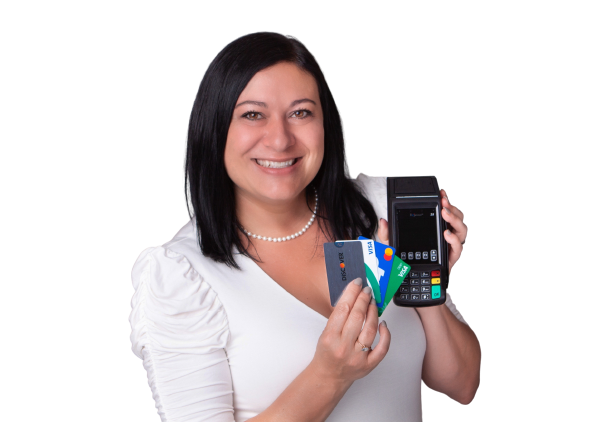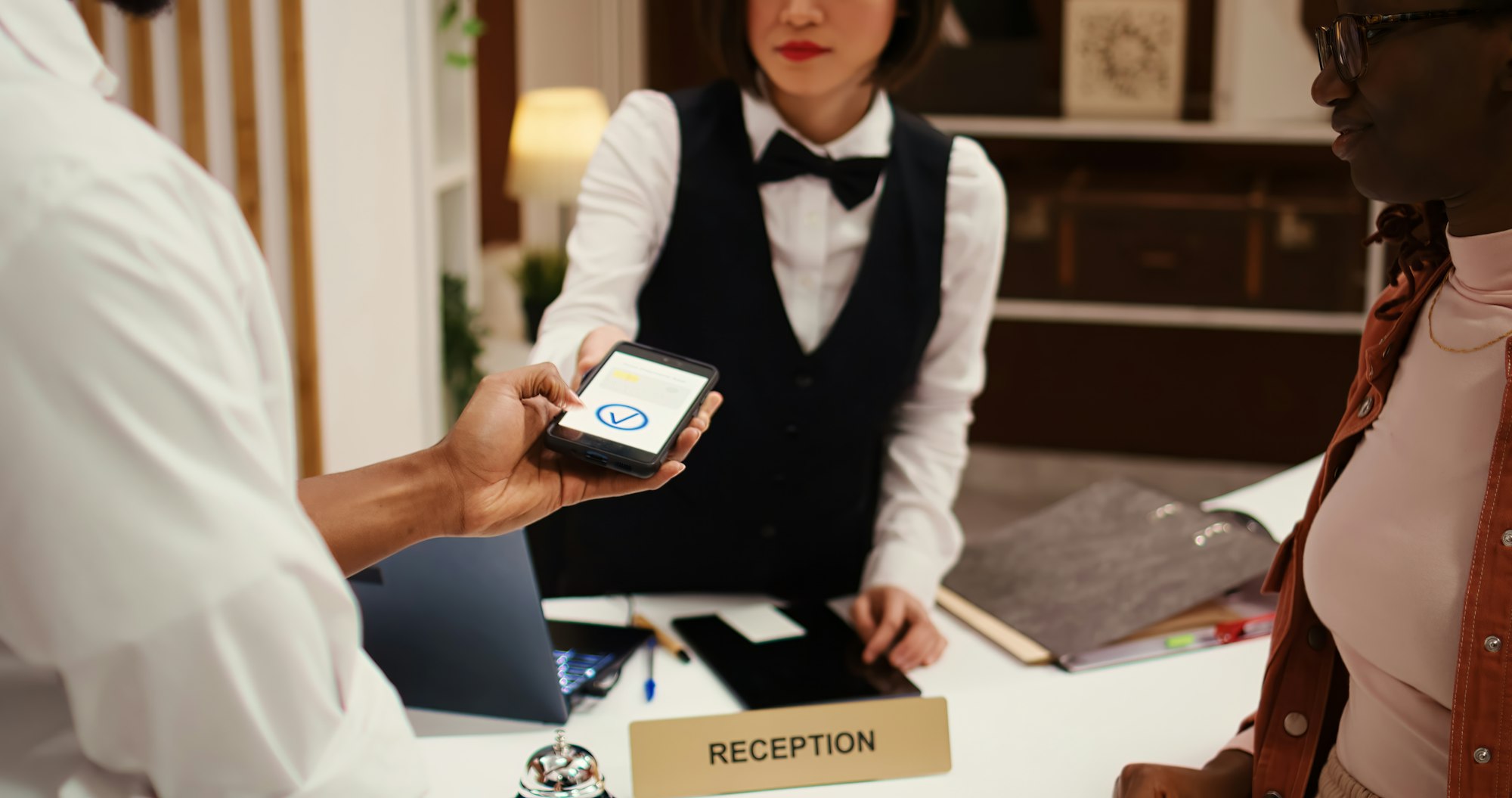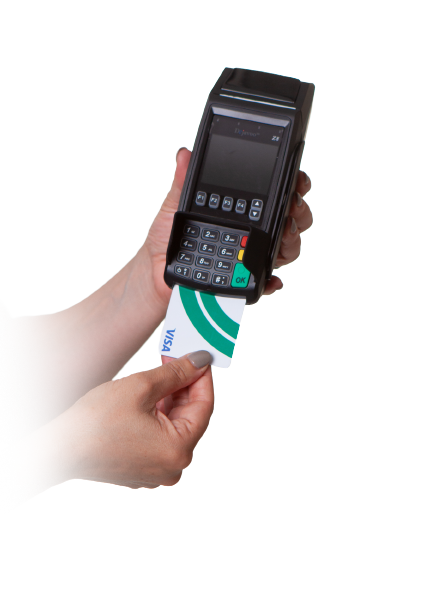Shoppers want quick, safe ways to pay, and QR code payments are stepping up to meet that demand. Since the pandemic, these digital codes have taken off, letting customers check out with just a quick scan from their phones. More stores now offer contactless payments to cut down lines and keep things moving.
By 2025, QR codes are everywhere in retail, thanks to their low cost and familiar feel. Stores get faster payments; customers avoid digging for cards or cash. This mix of speed and convenience is turning QR codes into a must-have at checkout, changing how we shop for good.
How QR Code Payments Work in Retail Settings
QR code payments are changing the way we check out in stores. A quick scan replaces typing in card numbers or handling cash. You can walk in, shop, and pay in seconds—all with your phone and a simple code. Let’s look at how this smooth digital handshake works for both shoppers and retailers, and what keeps your data safe along the way.
From Display to Payment: The Transaction Flow Explained
 Photo by Kampus Production
Photo by Kampus Production
QR code payments happen in just a few quick steps, whether you’re buying coffee or a cart of groceries. Here’s what the process looks like:
- QR Code Display
At checkout, the retail system shows a QR code on the screen or printed receipt. This code can be static (the same each time) or dynamic (unique for every transaction). - Customer Scans the Code
You open your banking app, digital wallet (like Apple Pay or Google Pay), or even a store app. Use your camera to scan the QR code. - Payment Information Pops Up
The scan pulls up payment details: store info, payment amount, and even loyalty rewards or discounts if the retailer supports them. With dynamic QR codes, the amount and order info come pre-filled. - Confirmation and Authentication
You review the payment, then tap to confirm. Depending on your settings, you might use a face scan, fingerprint, or passcode to approve the payment. - Transaction Complete
The notification pops up almost instantly: Payment successful. The store’s point-of-sale (POS) system updates right away and your receipt is ready.
Static vs Dynamic QR Codes:
- Static Codes are always the same. They work for tips, fixed-price items, or donations.
- Dynamic Codes are made fresh every time you check out, showing the exact amount and order. This adds security and cuts down on checkout mistakes.
Retailers love dynamic codes for busy checkouts—they speed up payments and reduce errors.
Security Features and Data Privacy
Trust is everything at checkout. QR code payment systems are built with strong security features to protect both shoppers and retailers from fraud or data leaks.
Built-in Safeguards:
- Encryption: Payment data is encrypted from your phone to the POS, so card numbers and account info stay hidden from prying eyes.
- Tokenization: Your card details never touch the retailer’s system. Instead, one-time-use tokens stand in for sensitive data during transactions.
- Dynamic QR Codes: Each one is generated per transaction and can’t be re-used, blocking scammers from copying codes.
- Two-Factor Authentication (2FA): Many apps require biometric checks or passcodes, adding another layer if your phone falls into the wrong hands.
- Privacy by Default: Your data isn’t stored on the code or on random retail devices. Only you and your payment provider access sensitive info.
Extra Safety Tips for Shoppers:
- Always scan codes from trusted sources (on the store’s POS or printed receipt).
- Use mobile wallets that offer fraud alerts and instant transaction notifications.
- Keep your app software up to date for the latest protections.
With these tools, QR code payments not only speed up lines—they also set a high standard for staying safe while you shop.
Key Benefits of QR Code Payments for Checkout Speed and Efficiency
QR code payments do more than just look modern—they make shopping and selling faster and easier for everyone involved. From cutting down on lines to improving how stores run, QR code payments bring a set of real advantages that help both customers and retailers in practical ways. Here’s how these simple scans are changing the checkout experience.
Faster Transactions and Reduced Wait Times
 Photo by Kaboompics.com
Photo by Kaboompics.com
Lines at the register have always been a pain. QR code payments speed things up, letting shoppers pay in seconds without counting cash or swiping cards. Recent reports show that QR-based payments can cut average transaction times by nearly half compared to chip cards or cash.
What do real stores say?
- A global coffee chain using QR payments saw wait times drop up to 30%.
- Fast food giants like McDonald’s found that digital orders and QR code pay-ins sped up queues, helping them manage crowds during peak hours.
With dynamic QR codes, each customer’s order is bundled into one quick scan, blending payment and loyalty rewards in a single tap. That means fewer lineups, more happy customers, and a less stressful shift for busy staff. When seconds count during busy times, this edge matters.
Operational Efficiency for Retailers
When payments run faster, the whole store works better. QR code systems take a lot of little steps out of checkout, freeing cashiers from keying in totals or troubleshooting payment errors.
Key benefits for retailers:
- Less Cashier Involvement: Staff can focus on bagging or helping customers, not on running cards or counting bills.
- Lower Transaction Costs: Many QR code payment providers offer lower fees compared to standard card networks, trimming costs over thousands of sales.
- Streamlined Workflows: With digital payments, retailers skip trips to the bank and reduce reconciliation headaches at end of day.
- Real-Time Insights: QR code systems can link directly to back-office platforms, sending instant sales and inventory data.
Retailers adopting QR payments also find that automation goes beyond checkout. It can simplify loyalty programs, customer feedback gathering, and even automated reordering—all linked by simple scans. The result: leaner operations without cutting corners on service.
Enhanced Customer Experience
People want checkout to be fast, safe, and easy. QR code payments hit all three marks.
Why do shoppers like them?
- Contactless and Hygienic: Your phone does all the work. No need for cash or cards that change hands. This reassures health-conscious shoppers.
- Self-Serve Freedom: Customers control the experience without waiting for the cashier—scan, pay, and go. Perfect for busy shoppers and those who value privacy.
- Personalized Offers: Many stores link QR payments to memberships and discounts, unlocking rewards with each scan.
Studies show most customers feel more confident and satisfied with contactless QR payments, boosting repeat visits and loyalty. Loyalty programs are easier to enroll in or redeem through these systems, which helps keep customers coming back.
In sum, QR code payments bring convenience that sticks with shoppers long after they leave the store. That’s how speed at the register turns into lasting customer relationships.
Implementation Strategies for Retailers
Rolling out QR code payments can make checkout faster, but only if the systems are set up right and your staff knows the drill. Getting it right means thinking about both the tech side and how customers interact with these codes at the counter. Whether you run a single shop or manage dozens of locations, these strategies help your team get the most from QR code payments.
Integrating QR Code Payments with Existing POS Systems
 Photo by Kaboompics.com
Photo by Kaboompics.com
Before you can speed up your lines, your tech has to play nice together. In 2025, most retailers can choose from a few main options when adding QR code payments:
- Smart POS Systems
These all-in-one terminals can process cards and digital wallets, then create dynamic QR codes per transaction. They often sync sales, inventory, and even loyalty data in real time. - Mobile Attachments
Snap-on or app-based solutions turn a phone or tablet into a safe point-of-sale. These work well for mobile businesses, pop-ups, or spaces without fixed counters. - Standalone QR Payment Devices
Small, purpose-built terminals create QR codes to scan for pay. Best suited for small businesses or those with simple checkout needs.
To pull it all together:
- Confirm Compatibility
Make sure your POS supports QR code payments, or that your payment provider can integrate with your system’s API. Some older systems might need an upgrade or an add-on device. - Train Your Staff
Even great tech needs the human touch. Walk your team through the new flow: how to trigger a QR code at checkout, what to do if there’s a hiccup, and how to help less tech-savvy shoppers. Consider short video tutorials or demo sessions. - Review Security Settings
Double check encryption and PCI DSS compliance. Set up biometric logins if your POS supports it, and create guidelines for handling failed scans or suspicious activity. - Test Your Workflow
Run a mock checkout. Walk through different scenarios—peak times, returns, or multiple items. Smooth out any confusion before going live.
Pro tip: Choose a solution that works for your transaction volume. High-traffic retailers need fast, integrated options; low-volume shops can often make do with simpler, stand-alone setups.
Optimizing QR Code Placement and Usage
Customer experience hinges on the details. The way you display QR codes has a real effect on how quickly and reliably shoppers can scan and pay.
Best practices for getting your QR codes seen and used:
- Go Big and Keep It Clear
Make QR codes large enough—at least 2 cm x 2 cm for a short scan, but go bigger for displays or further distances. Use light backgrounds with dark codes for best camera recognition. - Place at Eye Level
Put codes where people naturally look: at checkout screens, counter signs, or near card readers. High-traffic areas like entryways can also grab attention, but payment codes work best right at the register. - Avoid Clutter and Confusion
Don’t bury the QR code in busy graphics or next to other barcodes. Give it room to breathe with a quiet zone (blank space) around the code. - Use Strong Calls-to-Action
Add text like “Pay Here: Scan to Check Out Fast” so customers know exactly what to do. A clear prompt increases scans. - Keep It Consistent with Brand
Tie QR code frames and sign colors to your shop branding. A small logo or consistent color scheme makes codes look trustworthy and guides returning shoppers. - Check Lighting and Reflection
Test your codes wherever you post them. Avoid placing in areas with glare, poor light, or odd angles that make scanning tough.
Quick checklist for staff:
- Double check codes are easy to spot and within reach.
- Confirm code size and clarity with your own phone.
- Watch for blocked or scratched displays, and replace damaged signage right away.
A smart approach to placement and design helps customers breeze through checkout, making speedy QR payments a key part of the store’s service promise.
Real-World Examples and Case Studies
The best way to see the power of QR code payments is through examples. From major brands to small local shops, QR codes are shaking up old checkout habits. Leading retailers set the pace by weaving QR into smartphone apps and loyalty programs. At the same time, small businesses use QR technology to cut costs and build stronger customer connections—often with just a simple sign on the counter.
How Leading Retailers Use QR Code Payments
 Photo by iMin Technology
Photo by iMin Technology
Top brands like Walmart, Amazon, and Starbucks aren’t just offering QR code payment—they’re making it a central part of shopping.
- Walmart: Has added QR code payment to its checkout lanes and self-service stations. Customers open Walmart’s app, scan a dynamic QR code, and pay instantly. This speeds up checkout and keeps lines moving, especially on busy weekends and holidays.
- Amazon: Amazon’s physical stores, including Amazon Go and Fresh, use QR codes for fast, card-free shopping. Shoppers scan a QR code at entrance gates or at checkout kiosks. Payment is charged to their Amazon account, which creates a frictionless, truly contactless experience.
- Starbucks: The Starbucks app generates a unique QR code for each purchase. Scan, pay, and earn rewards instantly. Their loyalty-driven QR pay system boosts speed, encourages return visits, and blends payment with perks in one step.
- Target & CVS: These retail giants rolled out in-app or on-screen QR payment to cut checkout times. Their apps not only handle payment via QR but also let shoppers clip digital coupons and rack up rewards with a single scan.
Key takeaways from these leaders:
- Dynamic QR codes prevent errors and add security.
- Branded QR systems tie seamlessly into loyalty platforms and apps.
- Customers enjoy quick, touch-free payments and easy rewards in one tap.
These retailers prove that QR code payment isn’t just for techies—it’s mainstream, fast, and reliable.
Impact on Small Businesses
For small shops, cafes, and pop-up stalls, QR code payments change the game. They remove the need for expensive terminals or cash registers, letting owners accept payments with just a printed code and a smartphone.
Here’s how smaller retailers use QR codes to speed up checkout and reduce costs:
- No Hardware Headaches: A simple printout at the counter (or on packaging for delivery businesses) turns any space into a payment zone. No pricey equipment or card contracts needed.
- Faster Checkouts: Customers pay in seconds—no counting cash, no waiting for a chip reader. This adds up, especially during rush hours or small events.
- Lower Costs: QR code payment solutions often mean lower transaction fees by skipping some traditional card processing networks.
- Remote and Mobile Selling: Farmers markets, street vendors, and pop-up sellers can all take quick payments without a bulky POS system, using QR from their phone or tablet.
- Stronger Customer Engagement: QR payments make it simple to link up with loyalty programs, collect feedback, or share promo deals. Many see higher tips and repeat visits after making checkout effortless.
Quick stats for 2025:
- Over 80% of contactless payments in Asia are now through QR codes, while North American small businesses are seeing 60%+ of digital customers choose QR over swiping cards.
- Sales opportunities increase as digital-first consumers expect fast, modern checkout everywhere they shop.
- Businesses collect valuable data through each scan, helping them understand customers without needing big data tools.
Small businesses don’t just keep up; they often set the pace for friendly, efficient, and affordable retail, making QR code payments a win-win for shopkeepers and shoppers alike.
Future Trends: What’s Next for QR Code Payments in Retail?
The rise of QR code payments has already turned checkout lines into a thing of the past for many shoppers. But the real story is just beginning. In 2025, QR codes in retail aren’t standing still—they’re getting smarter, faster, and more connected than ever before. Big innovations like artificial intelligence (AI), the Internet of Things (IoT), and augmented reality (AR) are not just buzzwords; they’re taking QR code payments from a quick scan-and-go to a fully interactive, data-driven, and even fun part of the shopping experience. Here’s where retail is heading next with QR codes.
AI-Powered Personalization and Security
Machine learning and AI are making every scan smarter. Instead of a static code that just opens a payment screen, new systems will recognize returning customers and serve up personalized deals, rewards, or product suggestions before you even tap “Pay.” Imagine having your favorite coffee order pop up as soon as you scan a code at your local cafe.
On the security front, AI tools keep watch for scams and suspicious activity. They can spot weird patterns in real time and flag risky QR codes, keeping both shoppers and stores safer with automated, instant checks. This means QR code payment fraud will be much harder to pull off.
- Instant fraud detection: AI spots suspicious activity and blocks bad actors.
- Biometric checks: Payment apps are using facial recognition or fingerprints for ultra-fast, secure confirmation at checkout.
- Tailored recommendations: Offers, coupons, and loyalty messages appear right after you scan, based on your shopping habits.
IoT Integration and Smart Store Automation
Retailers are connecting their devices—from shelves to checkout screens—with the Internet of Things, and QR code payments are sliding right into this web. When a QR code payment is made, smart shelves update inventory instantly, and back-of-house teams know when to restock. This tech brings better selection and fewer “out of stock” signs for shoppers.
Some stores are rolling out digital price tags and product labels powered by IoT. You scan a QR code near an item and see real-time availability, access nutrition details, or even lock in a limited-time discount on the spot.
- Dynamic inventory updates: QR payments trigger instant changes to stock levels.
- Checkout-free shopping: In connected stores, shoppers may simply scan, pay, and walk out—no register needed.
- Smart packaging: QR codes on items offer traceability, recycling tips, or rewards with each scan.
Augmented Reality (AR) Shopping
Augmented reality is turning static QR codes into shopping launchpads. By scanning a code, you can see products in 3D, try out color options virtually, or watch quick demos without hunting down a store associate. Some fashion retailers let you scan a QR code and see how an outfit looks on a digital model before buying.
- Virtual try-ons: Shoppers can test cosmetics, clothes, or glasses using AR right from their phones.
- AR-powered guides: QR codes open step-by-step setup guides or product tutorials overlaid on your device’s camera.
- Interactive deals: Unlock hidden promotions or games, making checkout more engaging.
Broader Payment Choices and Global Convenience
QR codes aren’t just for linking to an app anymore. Now, more providers support QR payments that connect to everything from local e-wallets to cryptocurrency accounts, making checkout simple whether you’re shopping in your neighborhood or traveling abroad.
QR payments are expected to reach over 2 billion users worldwide, with support for:
- Local and international wallets
- Cryptocurrency options
- Offline payments using QR (no internet needed)
Hybrid and “Phygital” Experiences
Blending physical and digital is the new retail reality. QR codes connect in-store and online shopping journeys. For instance:
- Scan-and-return: Easy returns by scanning a code on your receipt or packaging.
- Digital product passports: Scan for authenticity, care instructions, or resale value.
- Loyalty integration: Scan to collect points or sign up in seconds—no forms needed.
Smarter, Branded, and More Trustworthy QR Codes
Retailers are also making QR codes look and feel more trustworthy by adding their own logos, brand colors, and secure HTTPS links. Dynamic, branded codes are easier to trust and harder for scammers to fake.
- Visually distinct codes help shoppers know they’re in the right place.
- Click-tracking and analytics give stores insights without invading privacy.
 Photo by iMin Technology
Photo by iMin Technology
Key Takeaways for Retailers and Shoppers:
- Expect faster, safer payments with a personal touch.
- Look for QR codes that do more, offering info, deals, and instant updates.
- The checkout of the future will be simple, secure, and even a bit surprising.
Retailers aiming to stay ahead will need to watch these trends closely, as QR code payments move from helpful, quick tools at checkout to the core of how stores connect with customers—both in-person and online.
Conclusion
QR code payments have moved from a trendy option to a core retail tool. They let stores handle more shoppers, cut wait times, and offer a safer way to pay. The future looks strong, with global QR payment values set to grow by 50 percent from 2025 to 2029. Shoppers and retailers both gain from speed, lower costs, and simple, secure checkout.
These systems work in busy global brands and mom-and-pop shops alike. As new tech rolls out, QR codes will keep adding perks, like rewards and instant inventory updates. With every scan, the checkout experience gets better.
Smart retailers who act now will lead this shift and win loyal customers for years to come. Thanks for reading—share your thoughts or success stories with QR code payments below!






